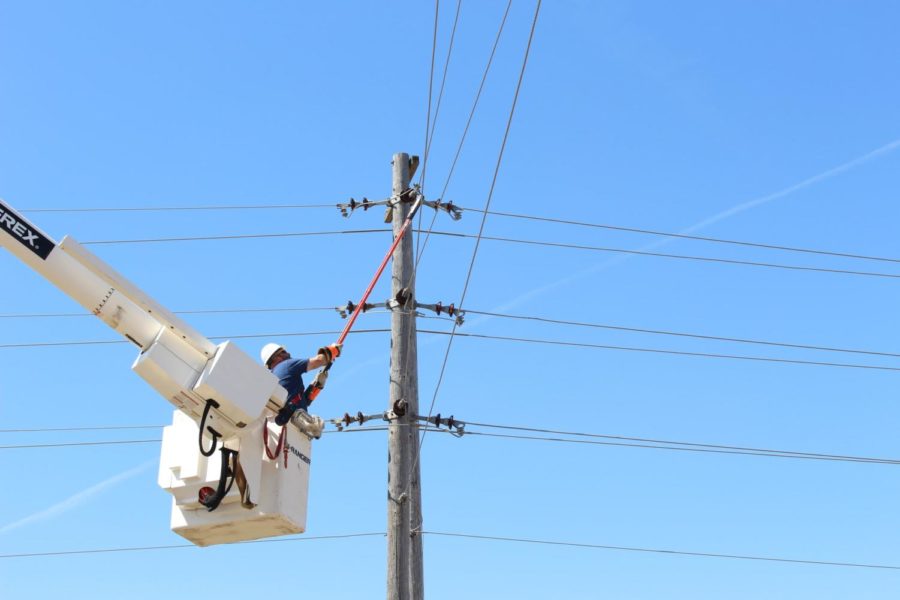Editorial: How and why Texas lost its power
The ISD Editorial Board discusses what caused the mass blackouts and power failures during the winter storm in Texas last month.
March 2, 2021
In February, Texas experienced a winter storm so severe it caused the state’s worst blackouts in decades, leaving millions of people without power in temperatures that dropped to record-breaking negatives — all of this in a state whose normal February temperatures range from 40 to 60 degrees Fahrenheit.
It’s truly no wonder regular Texans were unprepared for a storm of this magnitude. Not only did the storm cause enormous widespread blackouts, it set into motion a series of crises that are still being dealt with now, weeks later.
More than 70 people have been confirmed dead as a result of the storm and its effects. People died due to exposure to the cold, carbon monoxide poisoning — many residents turned to alternative sources of heat due to a lack of power — fires and car crashes.
In the immediate aftermath, more than 3 million people had no power due to grid failure and rolling blackouts by the Electric Reliability Council of Texas (ERCOT) to prevent their system from being completely overloaded.
There was also a huge water shortage in the state. The intensely cold weather overwhelmed the systems that clean water, causing hundreds of thousands of Texans to be under “boil water” advisories because their water was not clean.
Take a moment to imagine having no power and no clean water, in the middle of a pandemic, during record-breaking cold temperatures that you were entirely unprepared for. How would you stay warm? How would you take care of yourself? What would you do to survive?
Winter storm Uri was not preventable. Small losses in electricity comes with major storms all over the U.S. What was preventable was the millions of people who had to go without electricity for days on end and the deaths of tens of people who didn’t have access to safe heating.
How did this happen?
To start, Texas is one of the only states in the nation with its own complete power grid. This not only means the state’s power grid is deregulated, which is a huge factor in why the grid was unable to handle the increase in demand for power, but also that it can’t bring in power from other states when its system becomes overloaded.
Most of the power in Texas is controlled by ERCOT, which is “a competitive pricing market, meaning it trades on supply and demand.” Companies are trying to maximize profit by searching for the cheapest form of energy, often sacrificing more reliable infrastructure. In this case, that would be infrastructure able to operate in extreme cold.
The power grid in Texas, aside from being deregulated and operated for maximum profit, was also not winterized. The first thing Texas needs to do is winterize all equipment. Texas is not the only state with outdated infrastructure, and most states need to upgrade; however, it’s clear the isolation and deregulation of its power supply exacerbated the intense impact of the storm.
The state’s power supply could not supply the huge increase in demand as residents scrambled to heat their homes, nor was it prepared to survive the intense weather conditions during the storm.
Gov. Greg Abbott ordered an investigation into ERCOT, which is the right move given the magnitude of failure in keeping the state’s power going (although he did try to pin the blame on renewable energy, which was quickly disproven and he was forced to pivot).
While we can point to certain factors and we have a general idea of what happened, it’s still unclear what took place behind the scenes — what did ERCOT do to prepare when they knew the storm was coming? What are they doing now? There are still people without power, and ERCOT is being decidedly opaque about their actions.
ERCOT is classified as a nonprofit corporation governed by a board of directors and is apparently subject to oversight by the Public Utility Commission of Texas and the Texas Legislature. Clearly, whatever “oversight” took place was not enough.
The failure here is not solely on ERCOT. People died because they did not have power, and the state of Texas needs to be held accountable for that, all the way up to Gov. Greg Abbott.
In the meantime, many people in Texas are still struggling. For ways to help, take a look at this article.

















